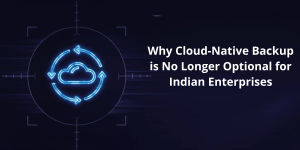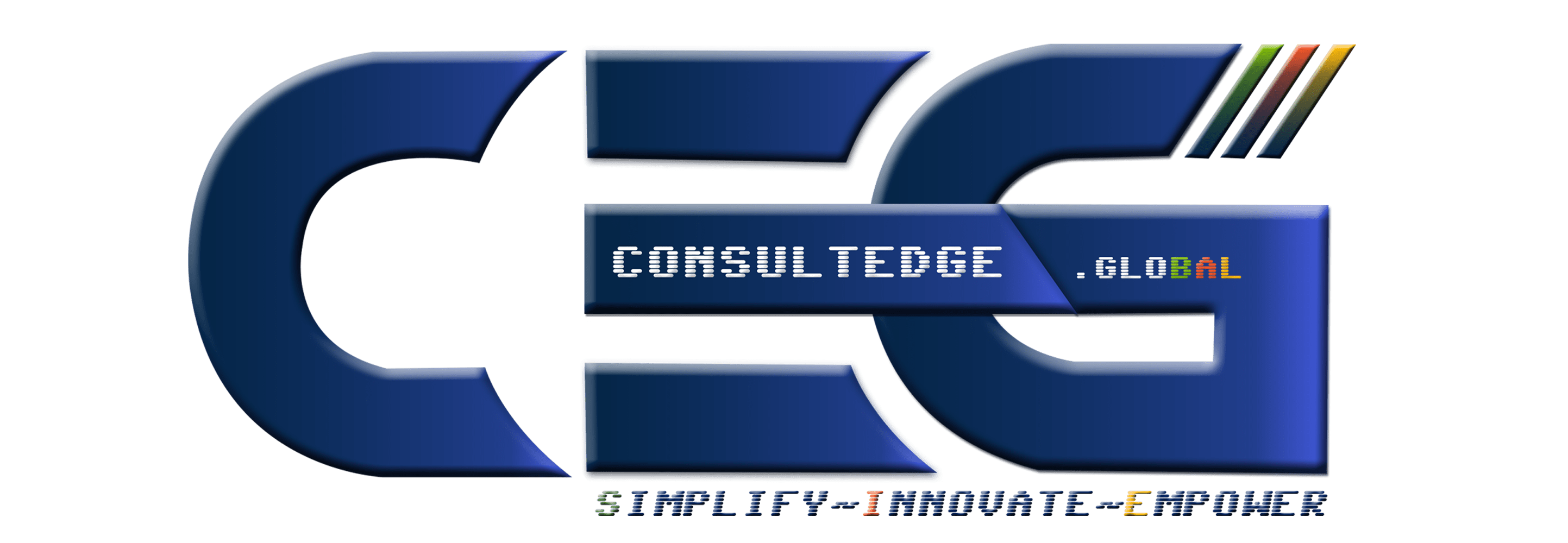Cybersecurity Isn't Optional Anymore Ignore It and Risk Extinction

The email seemed legitimate. A senior accountant at FACC, an Austrian aerospace manufacturer, received what appeared to be instruction.
The email seemed legitimate. A senior accountant at FACC, an Austrian aerospace manufacturer, received what appeared to be instructions from the CEO to transfer funds for a confidential acquisition project. Within hours, €50 million vanished into untraceable accounts. The CEO never sent that email. A sophisticated phishing attack had just bankrupted the company’s future.
This wasn’t a isolated incident. It’s the new normal.
The Illusion of Safety
Most businesses operate under a dangerous delusion: “Hackers target big corporations, not companies like ours.” This mindset has become a death sentence. Cybercriminals don’t discriminate based on company size — they hunt for vulnerability. And right now, small to mid-sized organizations represent the softest targets with the least protection.
The statistics paint a brutal picture. Over 60% of small businesses that experience a major cyberattack close their doors within six months. Not because the attack itself destroys them, but because the cascading consequences — lost customer trust, regulatory fines, operational paralysis, and reputation damage — create an insurmountable hole.
Why Traditional Thinking Fails
The old approach to cybersecurity treated it as an IT problem. Install antivirus software, set up a firewall, and call it a day. This mindset is as outdated as thinking a single lock on a front door protects a house filled with valuable assets while leaving windows open.
Modern cyber threats operate on multiple dimensions simultaneously. Ransomware groups don’t just encrypt files anymore — they steal data first, then threaten to publish sensitive information publicly unless paid. Social engineering attacks manipulate human psychology, bypassing technical defences entirely. Supply chain compromises turn trusted vendors into trojan horses.
Consider the Colonial Pipeline attack in 2021. Hackers gained access through a single compromised password for an inactive VPN account. That one vulnerability shut down fuel supply to the entire East Coast of the United States, created panic buying, and cost the company millions in ransom and recovery. The technical fix was simple. The failure to implement it was catastrophic.
The Human Factor: The Weakest Link
ConsultEdge Global empowers enterprises to establish mature, CERT-aligned governance.

Technology can build walls, but humans open doors. An employee clicks a malicious link. A contractor uses a weak password. An executive falls for a convincing voice phishing call. These aren’t hypothetical scenarios — they’re the primary attack vectors in over 90% of successful breaches.
Take the Twitter hack of 2020, where attackers compromised high-profile accounts including Barack Obama, Elon Musk, and Bill Gates. The sophisticated breach? A phone spear-phishing attack targeting Twitter employees. The hackers didn’t break encryption or exploit complex vulnerabilities. They simply convinced employees to hand over access credentials.
The lesson is clear: cybersecurity isn’t just about technology. It’s about culture, training, and creating organizational awareness that everyone serves as a potential entry point or a defensive barrier.
Result: Cyber governance becomes structured, transparent, scalable, and externally validated.
Real-World Consequences Beyond Headlines
The devastation goes far beyond immediate financial loss. When Equifax suffered a data breach exposing personal information of 147 million people, the company paid over $1.4 billion in settlements and lost immeasurable customer confidence. Executives resigned. Stock prices plummeted. The brand became synonymous with security failure.
Healthcare providers face even darker consequences. When hospitals get hit by ransomware, patient care stops. In Germany, a woman died after an ambulance had to be redirected to a more distant hospital because a ransomware attack crippled the closest facility’s systems. Cybersecurity failures now have body counts.
For professional service firms — law offices, accounting firms, consultancies — a single breach can destroy client relationships built over decades. Who wants their attorney handling sensitive legal matters if that firm just exposed client data to criminals?
The Cost of Inaction vs Action
A practical breakdown shows the stark contrast:
Cost of prevention:
✅ Employee security awareness training: $20–50 per employee annually
✅ Multi-factor authentication implementation: $3–10 per user monthly
✅ Regular security audits: $5,000–25,000 annually for SMBs
✅ Endpoint protection and monitoring: $50–150 per device yearly
Cost of a breach:
✅ Average ransomware payment: $200,000-$2 million
✅ Business downtime: $10,000-$500,000 depending on duration
✅ Customer notification and credit monitoring: $50-$1 million
✅ Reputation damage and lost business: Incalculable and potentially permanent.
What Actually Works: Beyond Compliance Checkboxes
Effective cybersecurity requires shifting from a compliance mindset to a resilience mindset. Checking regulatory boxes creates a false sense of security. Real protection demands ongoing vigilance and adaptation.
✅ Effective cybersecurity requires shifting from a compliance mindset to a resilience mindset.
Checking regulatory boxes creates a false sense of security. Real protection demands ongoing vigilance and adaptation.
✅ Multi-layered defence architecture
No single solution provides adequate protection. Firewalls, intrusion detection systems, endpoint protection, email filtering, and access controls must work in concert. When attackers breach one layer, others should contain the damage.
✅ Zero trust principles
Traditional security assumed anything inside the network was trustworthy. Modern approaches verify every access request regardless of origin. Users and devices must continuously prove legitimacy rather than being automatically trusted after initial authentication.
✅ Regular security training
Quarterly mandatory training sessions keep security awareness fresh. But effective programs go beyond boring slideshow presentations. Simulated phishing campaigns create experiential learning that sticks. Employees who click malicious links in simulations receive immediate targeted training, turning mistakes into teaching moments without real-world consequences.
✅ Incident response planning
When (not if) an attack occurs, organizations need clear protocols. Who makes decisions? How do teams communicate if email systems are compromised? What gets prioritized for recovery first? Companies that practice incident response through tabletop exercises recover 30–50% faster than those responding ad-hoc.
✅ Vendor and supply chain security
Third-party relationships create hidden vulnerabilities. The Target breach that compromised 40 million credit cards started with an HVAC contractor’s compromised credentials. Every vendor with network access or data handling responsibilities needs security vetting.
Practical Steps Anyone Can Implement Today
✅ Enable multi-factor authentication everywhere
This single action blocks over 99% of automated credential attacks. Turn on MFA for email, banking, cloud storage, social media — everything.
✅ Implement strong password policies
No more “Password123” or reused passwords. Password managers generate and store complex unique passwords — even free options offer massive security benefits.
✅ Maintain software updates religiously
The Equifax breach exploited a known vulnerability with a patch available for two months. Attackers target outdated systems — updating software closes known gaps.
✅ Back up data regularly — and test restorations
Ransomware becomes far less threatening when clean backups exist. But backups must be tested — restoration drills ensure they work in crisis moments.
✅ Segment network access
Contractors and guests shouldn’t have access to core business systems. Separate networks stop attackers from moving laterally when they compromise low-trust systems.
✅ Establish clear security policies
Document access rules, data handling protocols, acceptable use, and reporting steps for suspected incidents. Policies only work when employees know and understand them.
The Competitive Advantage of Security
While most organizations view cybersecurity as a cost center, forward-thinking companies recognize it as a competitive differentiator. When choosing between vendors, clients increasingly demand proof of security practices. Security certifications, insurance coverage, and clear incident response procedures win contracts.
Financial institutions and healthcare providers already experience this reality. HIPAA compliance and PCI DSS standards create mandatory security baselines. But customers choose providers who exceed minimums rather than barely meeting them.
As high-profile breaches continue making headlines, security consciousness spreads to industries that historically ignored it. The company demonstrating robust security practices becomes the trusted choice over competitors with questionable protections.
Governance is not static—it must evolve with the threat landscape. ConsultEdge.Global supports continuous improvement through certified audits that validate controls, identify gaps, and inform strategic decisions.
Audit services include:
✅ Pre-assessment planning and scope definition
✅ Technical evaluations and evidence collection
✅ Risk-based reporting and remediation guidance
✅ Post-audit support and compliance closure
The Evolution Continues
Threats evolve constantly. Artificial intelligence now powers both attack and defence. Deepfake technology enables convincing video and audio impersonation for social engineering. Quantum computing threatens to break current encryption standards. The Internet of Things creates millions of new vulnerable devices.
Organizations can’t implement security measures once and declare victory. Effective cybersecurity requires ongoing investment, continuous learning, and adaptive strategies. The good news? Attackers typically choose easier targets. Being harder to compromise than peers provides substantial protection even without perfect security.
The Choice Is Clear
Cybersecurity has transitioned from optional IT concern to existential business imperative. The question isn’t whether an organization will face cyber threats — it’s whether defences will hold when attacks come.
Companies ignoring this reality face predictable consequences: financial devastation, reputation destruction, regulatory penalties, and potentially business closure. Meanwhile, organizations embracing security as a core business function build resilience, earn customer trust, and position themselves for sustainable success.
The choice seems obvious. Yet thousands of organizations continue operating with minimal protections, hoping they won’t become the next cautionary tale. Hope isn’t a strategy.
Every day of delay increases risk. Every postponed security investment gambling with survival. The cost of action pales in comparison to the cost of inaction.
The extinction isn’t coming from some distant future threat. It’s happening now, one compromised organization at a time. The only question is whether any given business will be next — or whether it will be ready when attackers come knocking.
The reality check: Most organizations reading this will take no immediate action. They’ll bookmark the article, forward it to their IT department, or mentally file it under “important but not urgent.” Then, months or years later, they’ll experience a breach and wonder why they didn’t act when the signs were clear.
“Don’t be that organization. Start today, the threats certainly aren’t waiting”
Securing India's Digital Future with ConsultEdge.Global
Stay compliant. Stay secure. Stay ahead with ConsultEdge.Global.
You May Also Like
 Windows 10 End of Support Alert – Secure Your Systems Today
Windows 10 End of Support Alert – Secure Your Systems TodayEnd of Support Alert: Windows 10 Reaches Its Final Days — Secure Your Systems with...
 How Druva Simplifies Global Data Protection & Compliance
How Druva Simplifies Global Data Protection & ComplianceHow Druva Simplifies Global Data Protection & Compliance Druva offers a 100% SaaS-based platform proudly...
 Why Cloud-Native Backup Is Now Essential for Indian Enterprises
Why Cloud-Native Backup Is Now Essential for Indian EnterprisesWhy Cloud-Native Backup is No Longer Optional for Indian Enterprises In today’s fast-evolving digital economy,...



